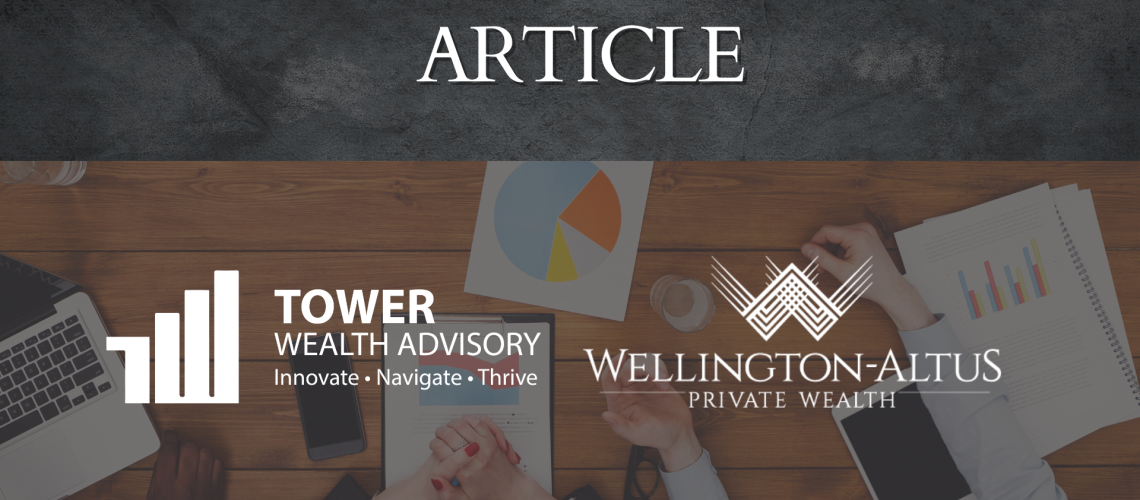 As investors, we must accept that the stock markets inherently come with risk — without risk, there would be no associated returns — and, instead, manage these risks accordingly. As advisors, one of the ways we manage risk is through your portfolio’s asset allocation: the strategic distribution of your portfolio’s assets among different types of investments, such as stocks, bonds, cash and other asset classes. Your portfolio’s asset allocation should reflect your risk tolerance, but may also be dependent on other things, such as stage of life or income needs. From a high level, your willingness to take on risk is reflected by the allocation between equities and fixedincome investments. While asset allocation is often discussed using percentages between major asset classes, understanding the dollar impact is one way to frame potential risk.
Consider the following: If you currently have a $1,000,000 portfolio with a 70/30 asset allocation between equities and fixed income, would you feel comfortable seeing the current $700,000 equity value temporarily fall by 15 percent to $595,000? How about to $400,000? While the last value is considered extreme, markets have experienced this type of volatility more than once in the last 20 years. Down periods are a normal part of investing and should be expected. Generally, market corrections are less pronounced, and there are certain actions we can take to try to prevent substantial portfolio losses at any one time, but every investor should be prepared to accept a reduced portfolio value for an extended period of time. If this temporary outcome is not tolerable, your portfolio allocation should be revisited.
The good news is that even though market volatility can be unsettling and downturns happen from time to time, history has shown that markets eventually change their course. However, one of the hardest parts of investing is trying to focus on the long term, because in order to do so, it requires getting through the inevitable volatility of the short term. Let’s not forget that $1 million invested in the equity market, as represented by the S&P/TSX Composite Index, at the start of the millennium would be worth almost $2.5 million today, despite the dot.com bust, the global financial crisis, the pandemic and everything in between.2 For most investors, longerterm returns are the only ones that matter. If you would like to discuss asset allocation and risk management as it relates to your current portfolio, please call.
As investors, we must accept that the stock markets inherently come with risk — without risk, there would be no associated returns — and, instead, manage these risks accordingly. As advisors, one of the ways we manage risk is through your portfolio’s asset allocation: the strategic distribution of your portfolio’s assets among different types of investments, such as stocks, bonds, cash and other asset classes. Your portfolio’s asset allocation should reflect your risk tolerance, but may also be dependent on other things, such as stage of life or income needs. From a high level, your willingness to take on risk is reflected by the allocation between equities and fixedincome investments. While asset allocation is often discussed using percentages between major asset classes, understanding the dollar impact is one way to frame potential risk.
Consider the following: If you currently have a $1,000,000 portfolio with a 70/30 asset allocation between equities and fixed income, would you feel comfortable seeing the current $700,000 equity value temporarily fall by 15 percent to $595,000? How about to $400,000? While the last value is considered extreme, markets have experienced this type of volatility more than once in the last 20 years. Down periods are a normal part of investing and should be expected. Generally, market corrections are less pronounced, and there are certain actions we can take to try to prevent substantial portfolio losses at any one time, but every investor should be prepared to accept a reduced portfolio value for an extended period of time. If this temporary outcome is not tolerable, your portfolio allocation should be revisited.
The good news is that even though market volatility can be unsettling and downturns happen from time to time, history has shown that markets eventually change their course. However, one of the hardest parts of investing is trying to focus on the long term, because in order to do so, it requires getting through the inevitable volatility of the short term. Let’s not forget that $1 million invested in the equity market, as represented by the S&P/TSX Composite Index, at the start of the millennium would be worth almost $2.5 million today, despite the dot.com bust, the global financial crisis, the pandemic and everything in between.2 For most investors, longerterm returns are the only ones that matter. If you would like to discuss asset allocation and risk management as it relates to your current portfolio, please call.
The information contained herein has been provided for information purposes only. Graphs, charts and other numbers are used for illustrative purposes only and do not reflect future values or future performance of any investment. The information has been provided by J. Hirasawa & Associates and is drawn from sources believed to be reliable. The information does not provide financial, legal, tax or investment advice. Particular investment, tax, or trading strategies should be evaluated relative to each individual’s objectives and risk tolerance. This does not constitute a recommendation or solicitation to buy or sell securities of any kind. Market conditions may change which may impact the information contained in this document. Wellington-Altus Private Wealth Inc. (WAPW) and the authors do not guarantee the accuracy or completeness of the information contained herein, nor does WAPW, nor the authors, assume any liability for any loss that may result from the reliance by any person upon any such information or opinions. Before acting on any of the above, please contact me for individual financial advice based on your personal circumstances. WAPW is a member of the Canadian Investor Protection Fund and the Investment Industry Regulatory Organization of Canada. ©️ 2023, Wellington-Altus Private Wealth Inc. ALL RIGHTS RESERVED. NO USE OR REPRODUCTION WITHOUT PERMISSION


